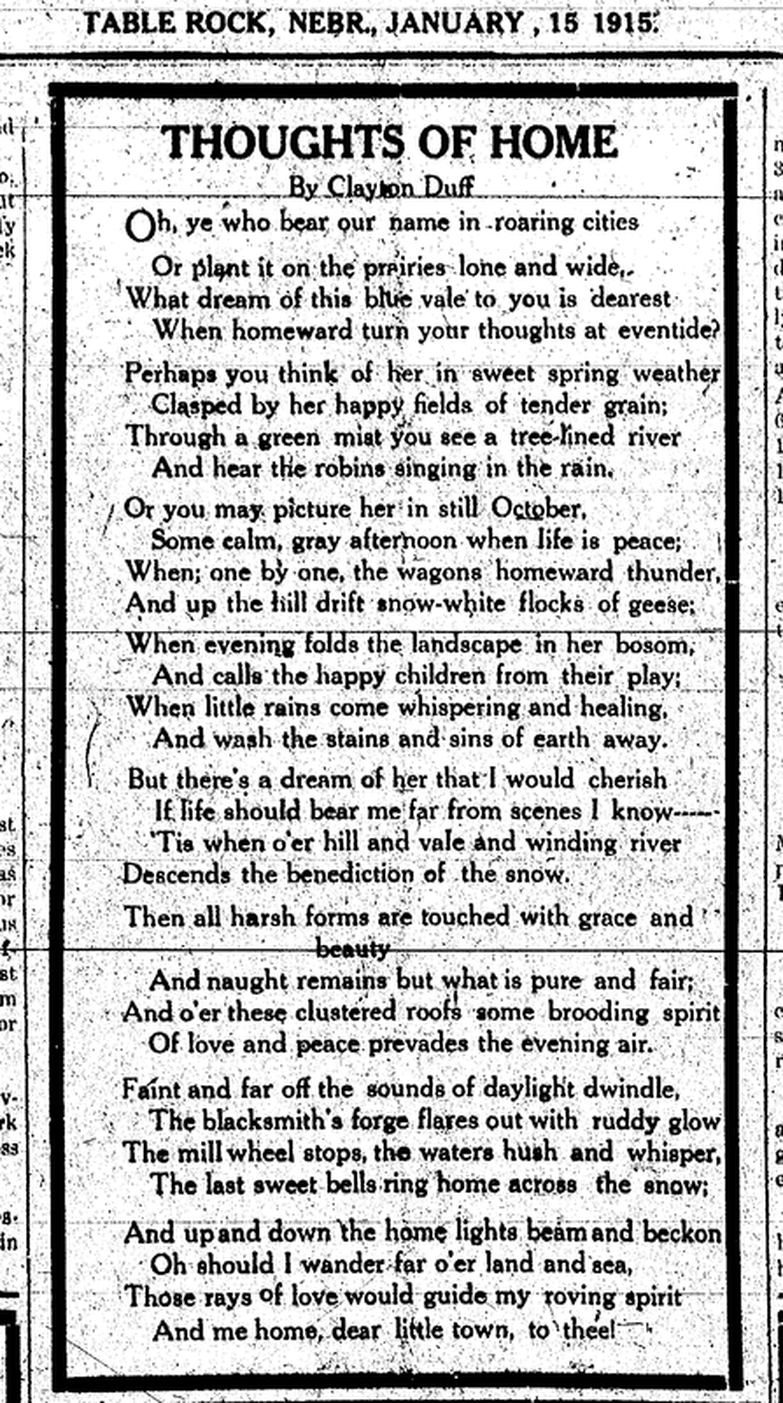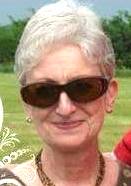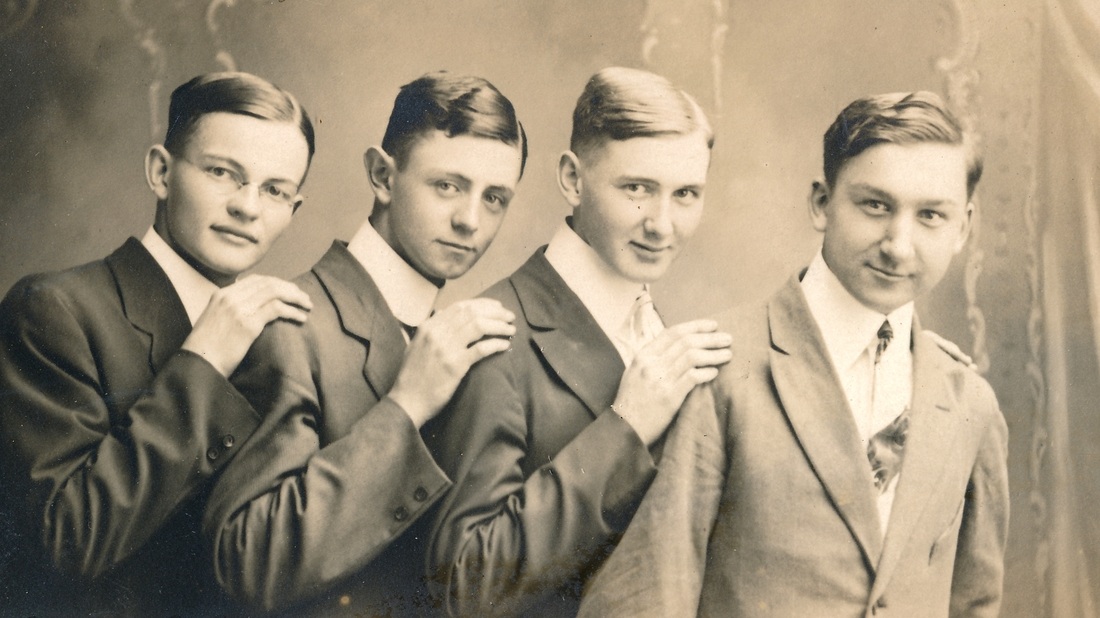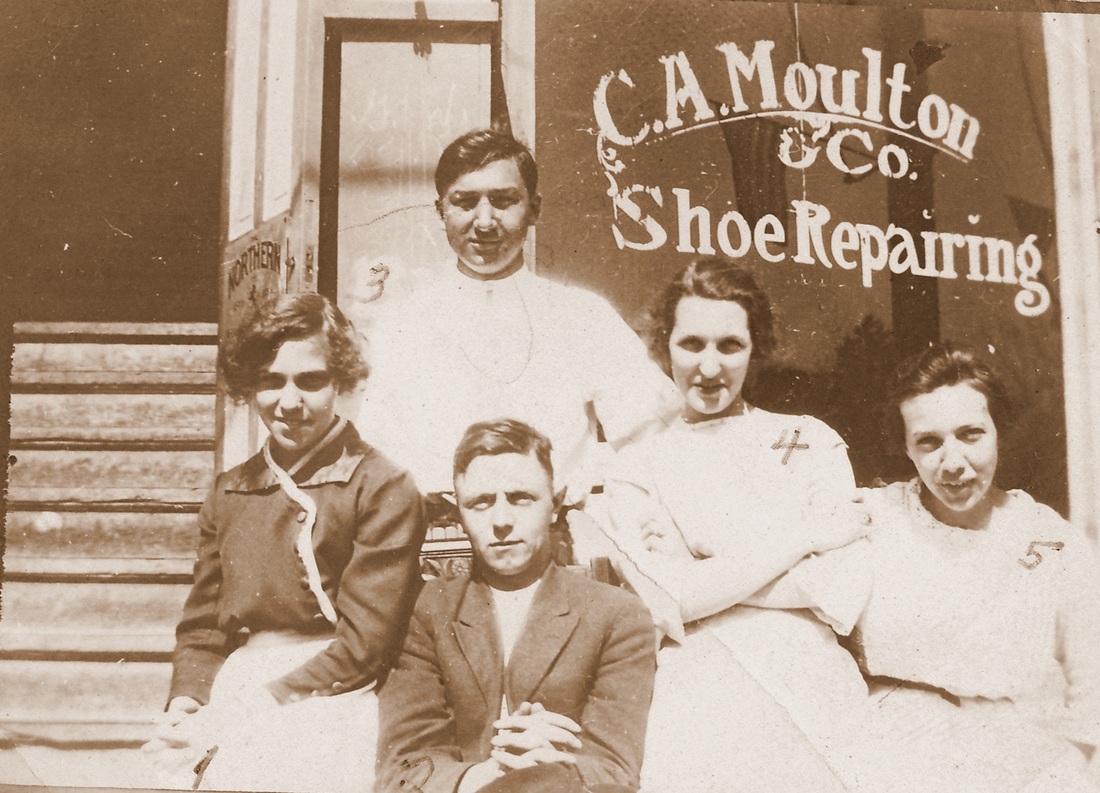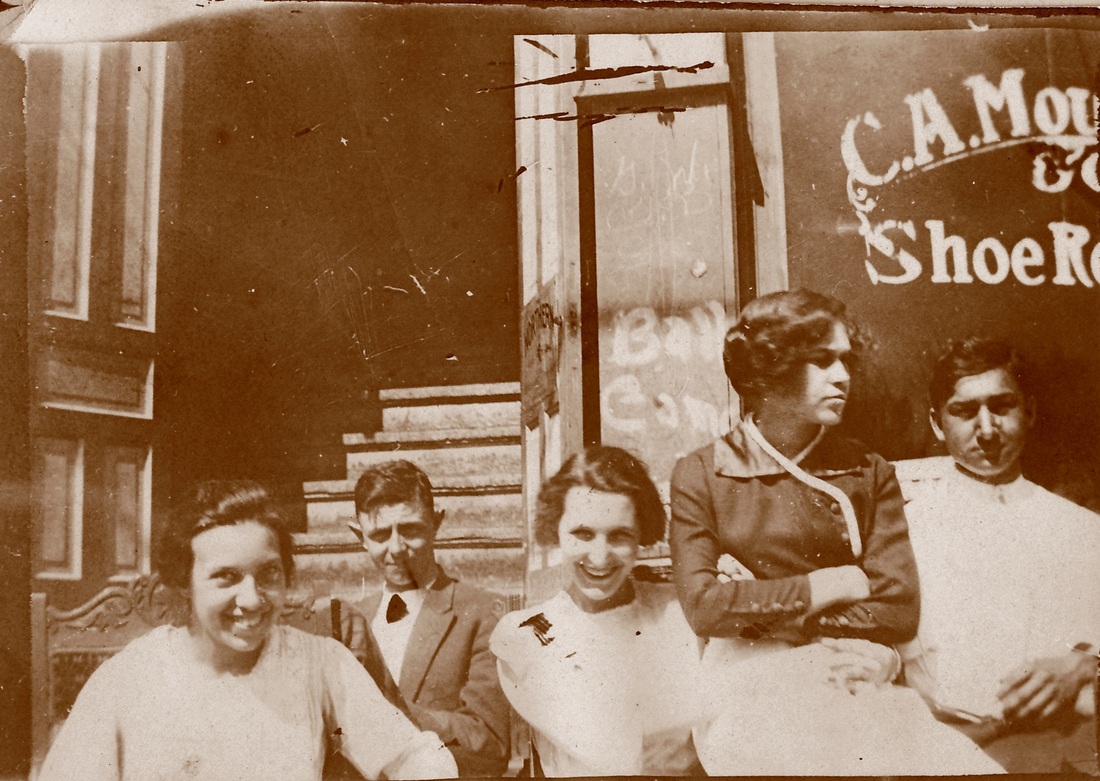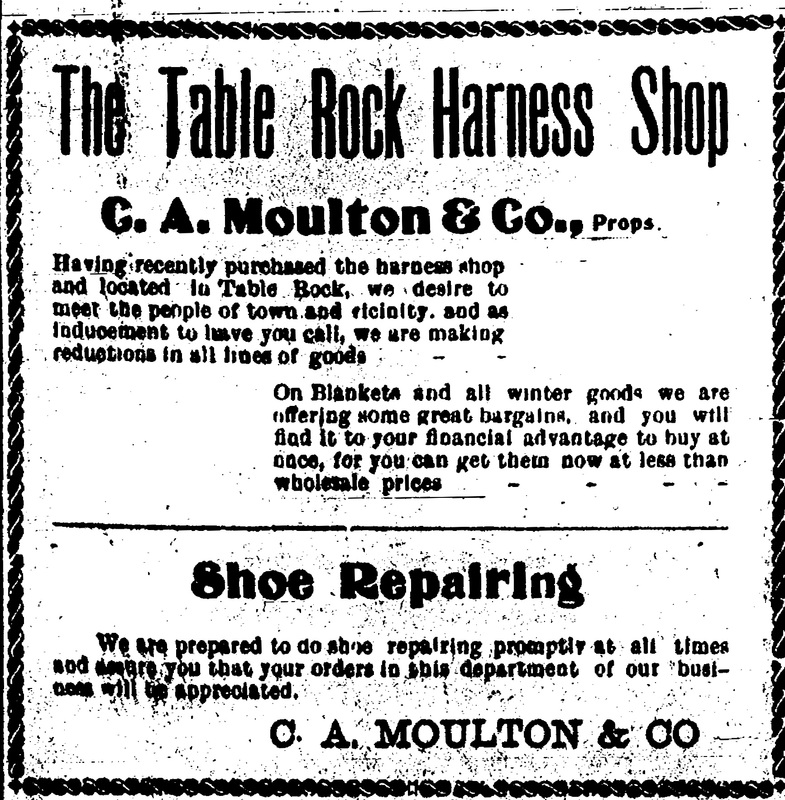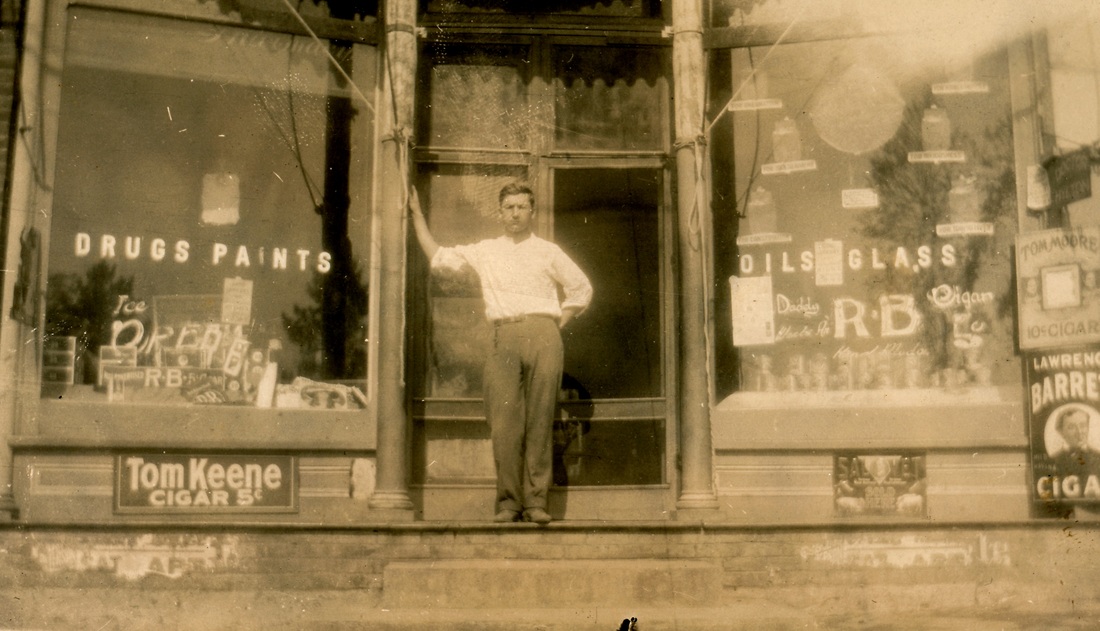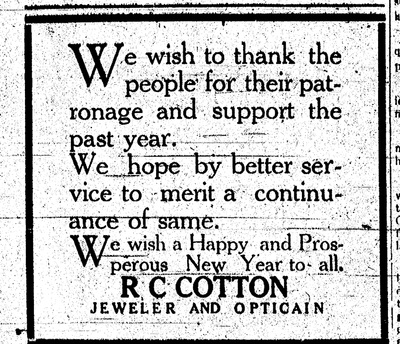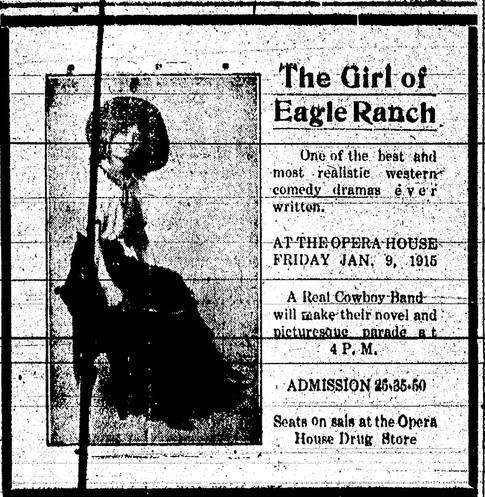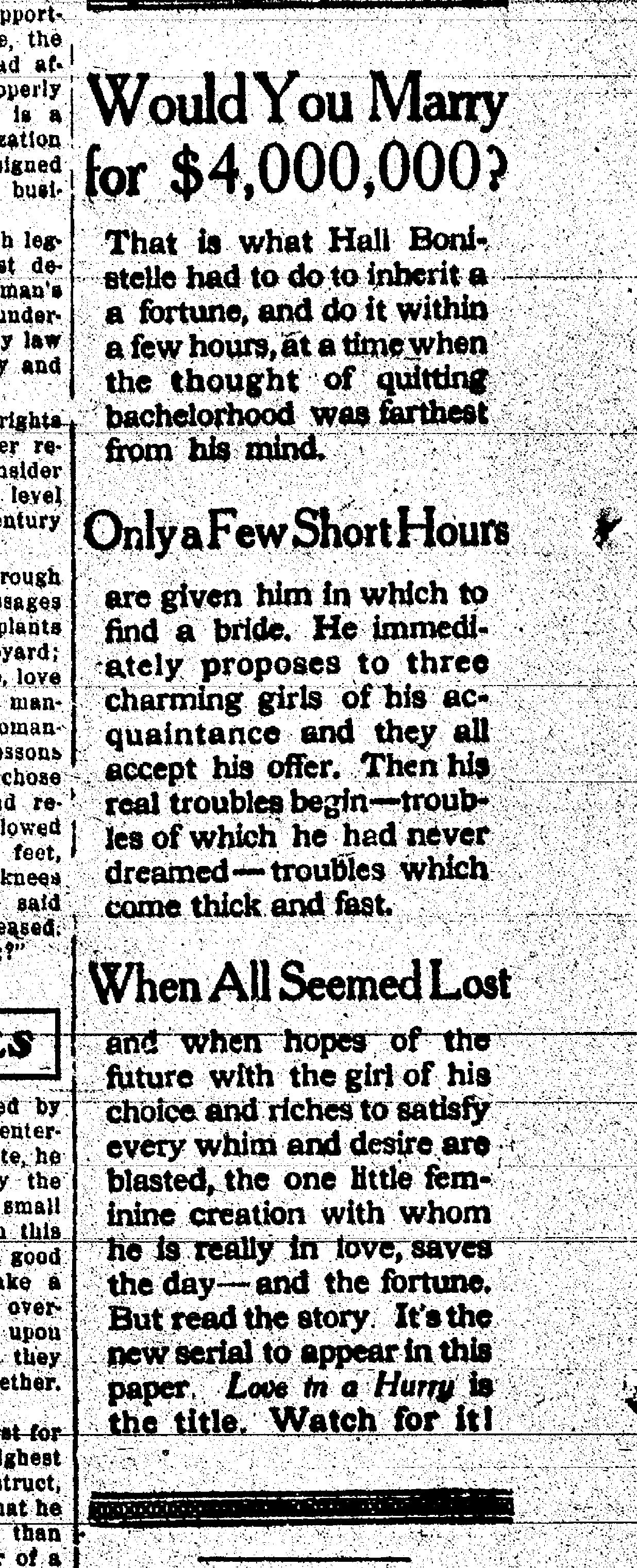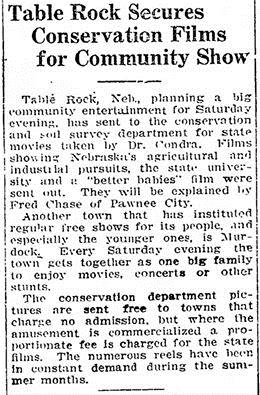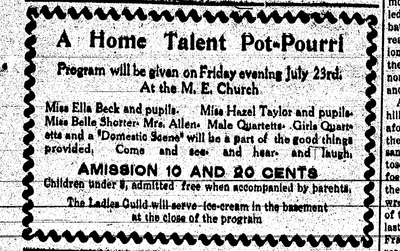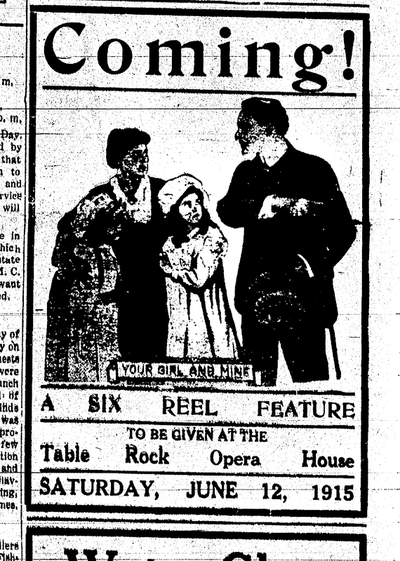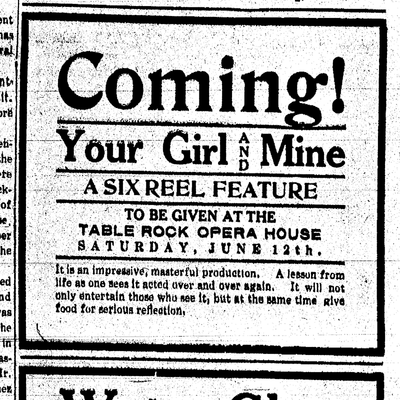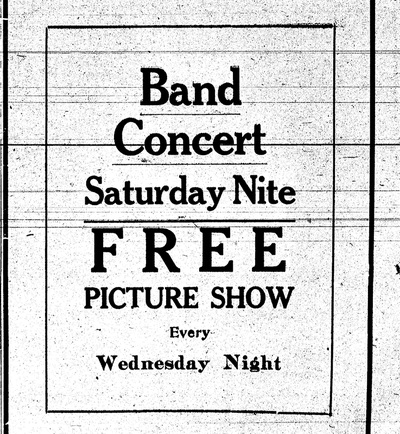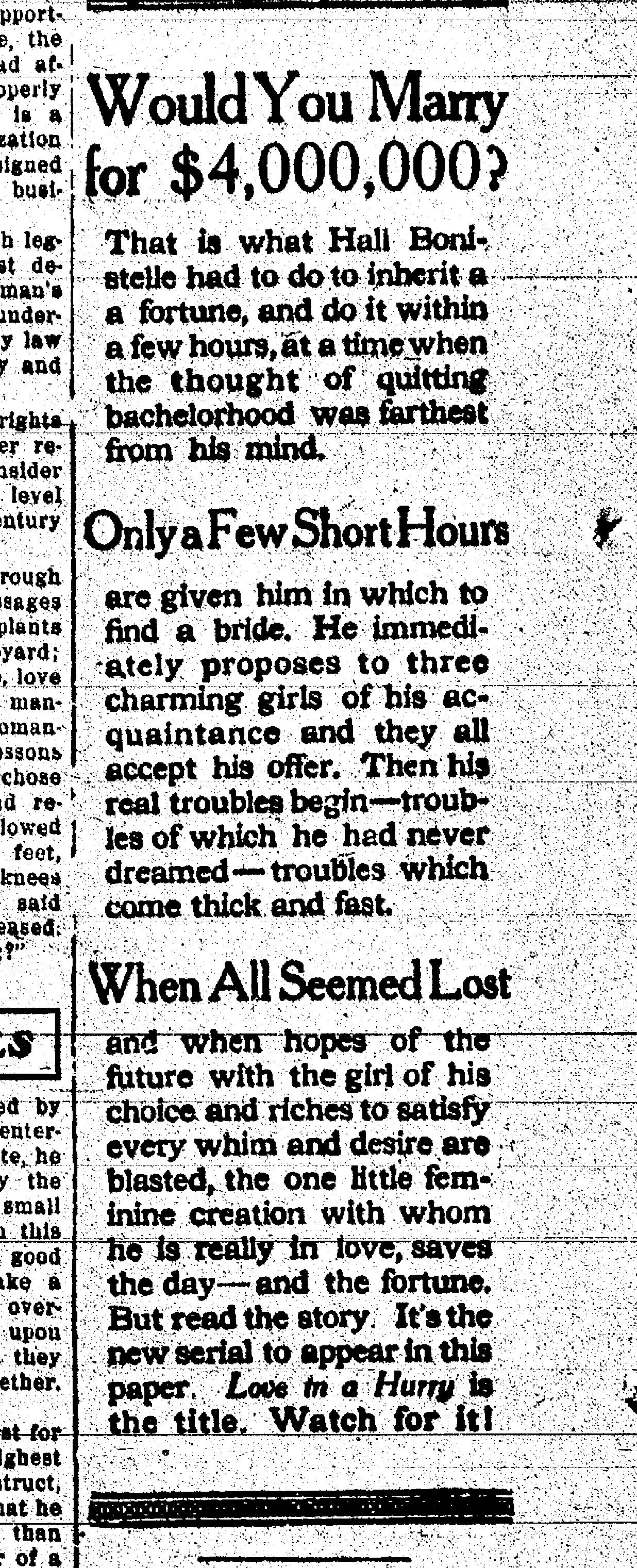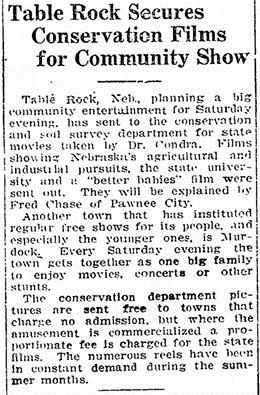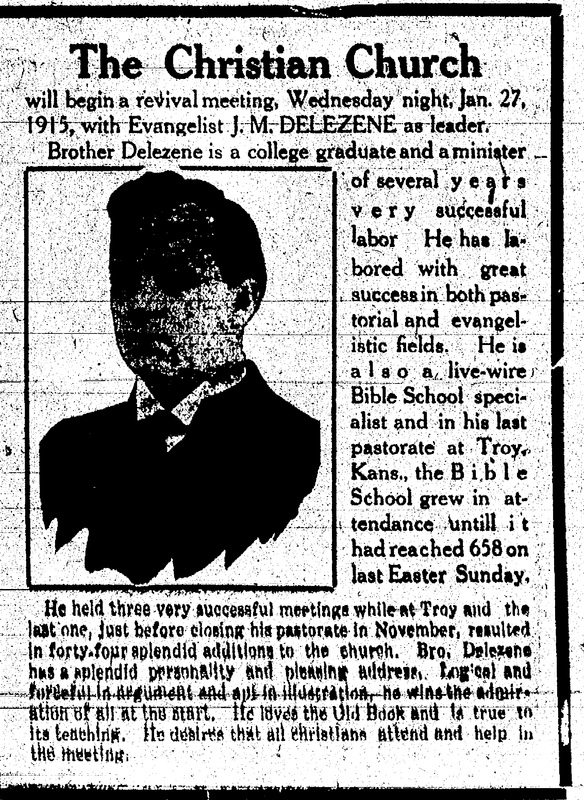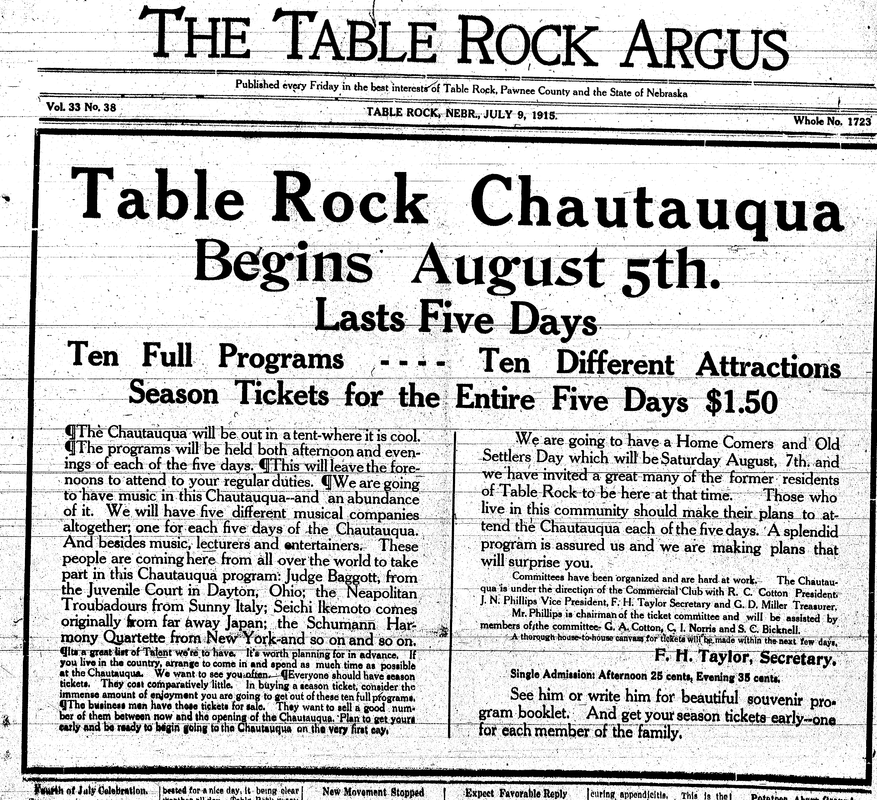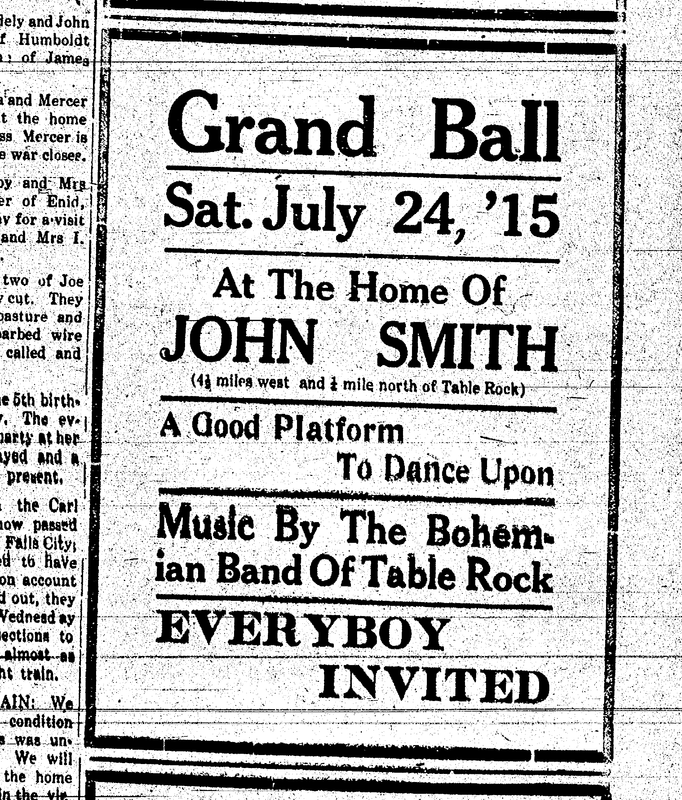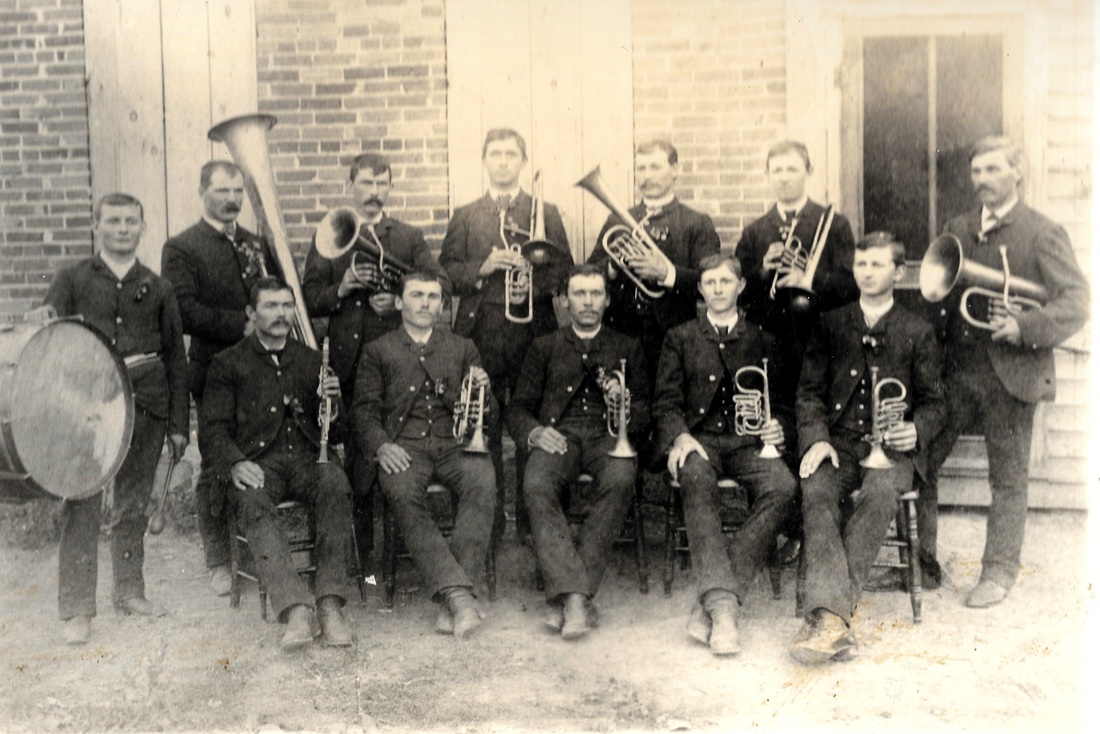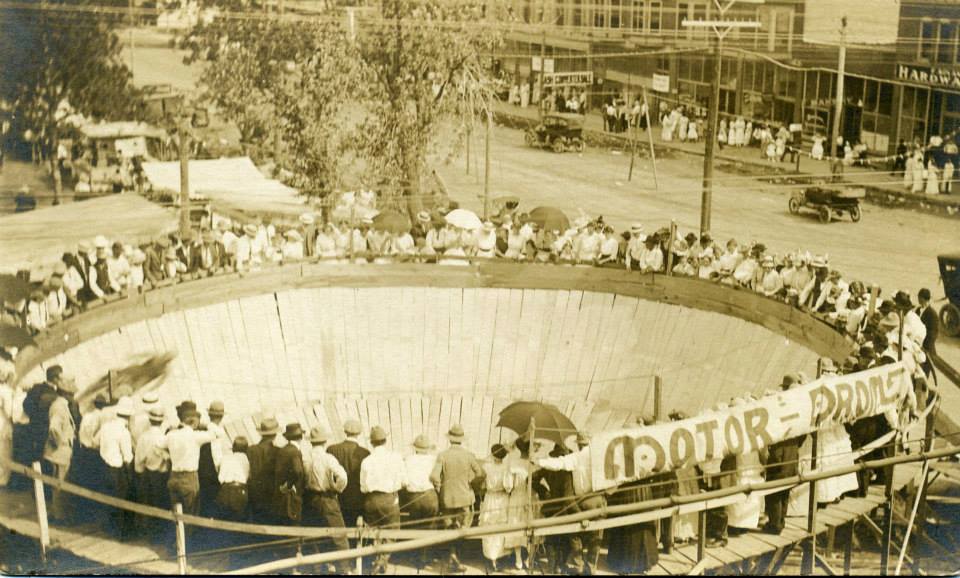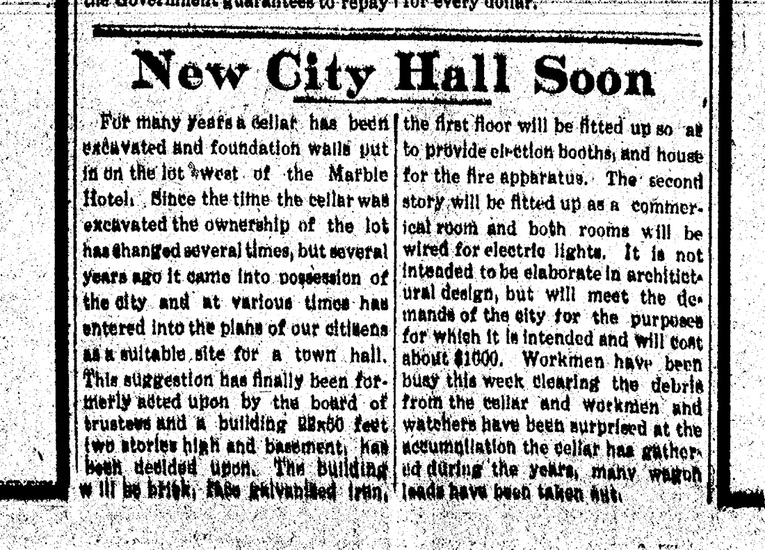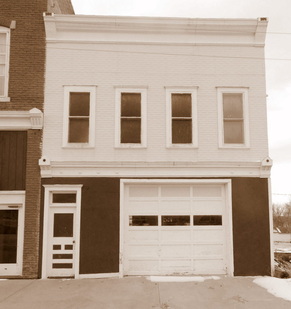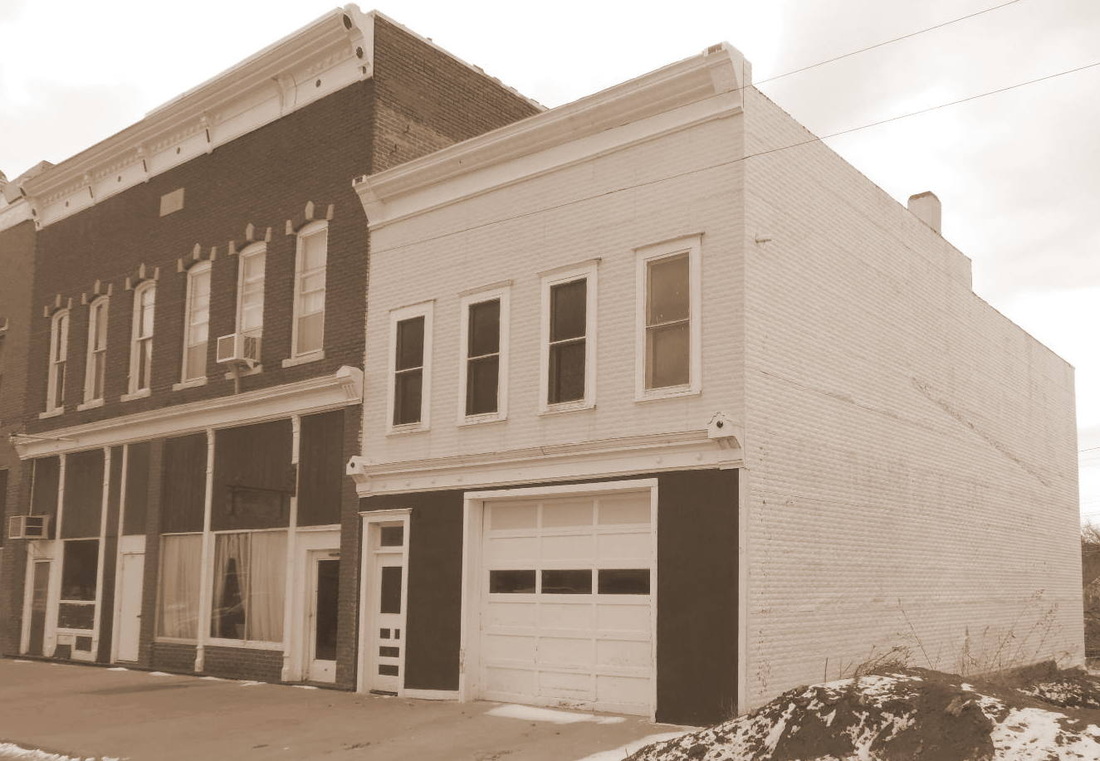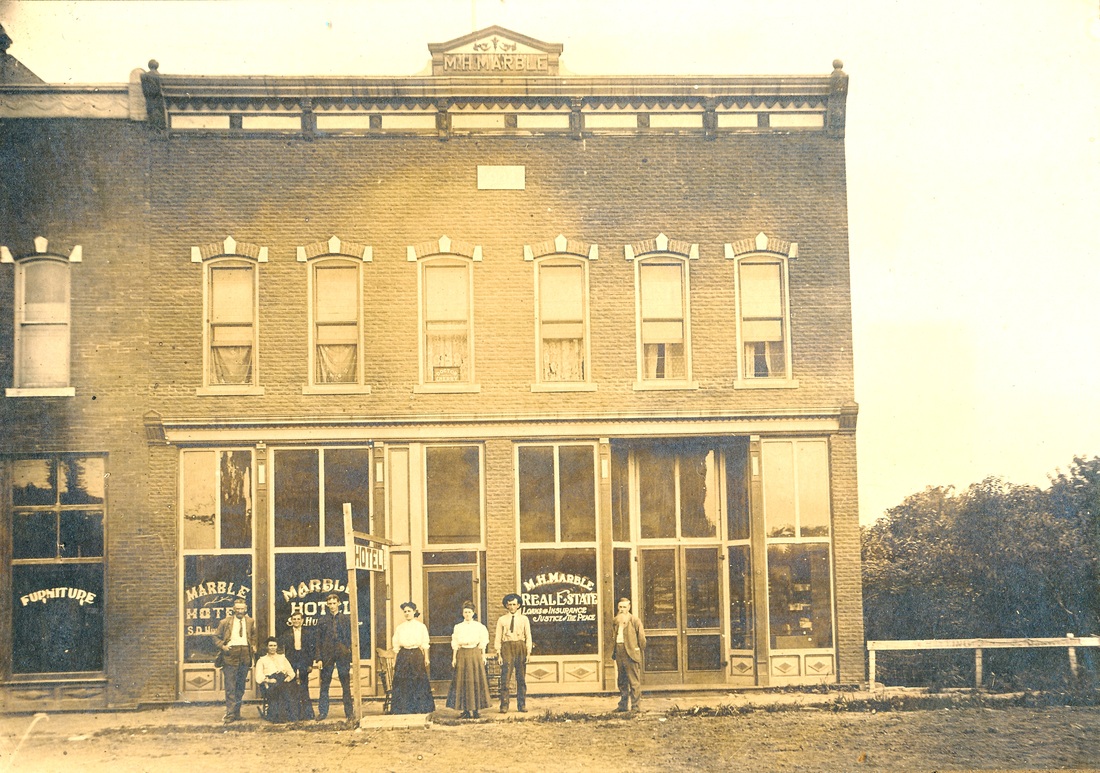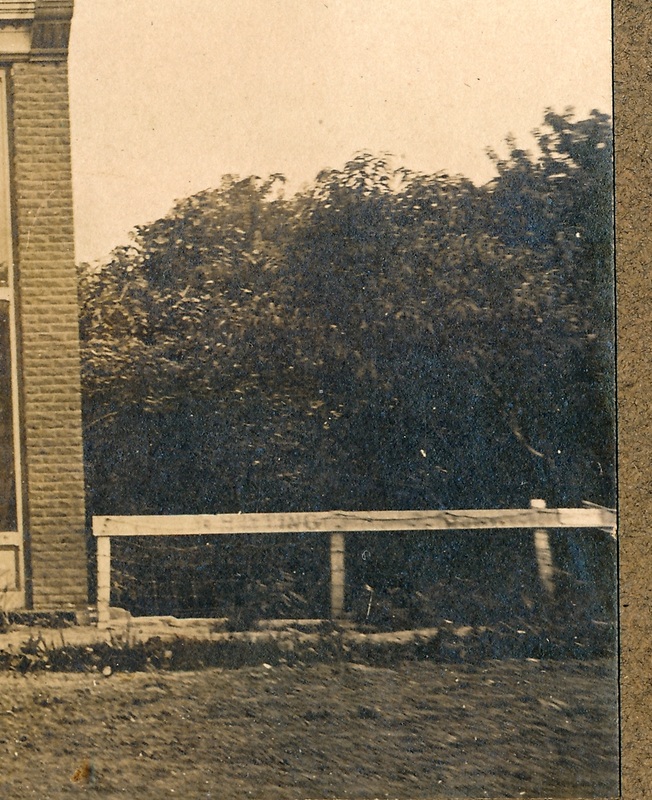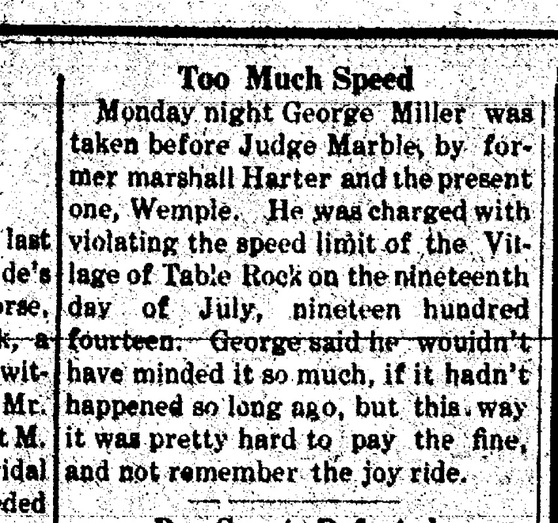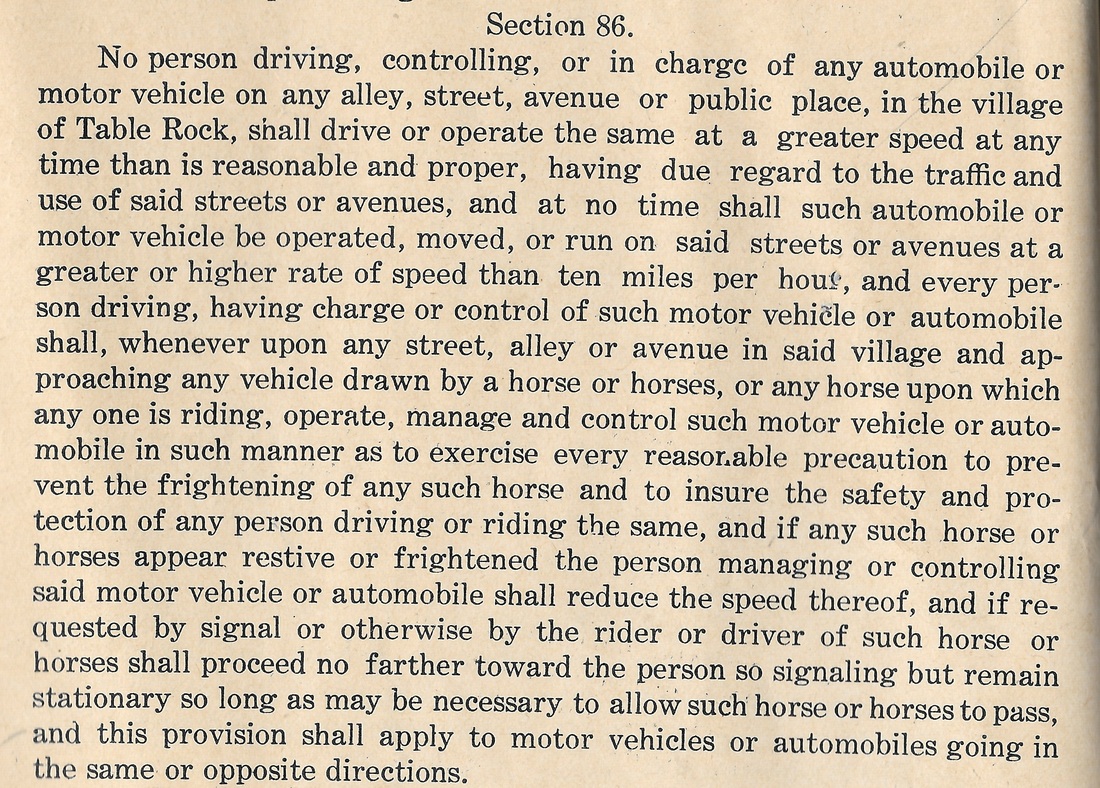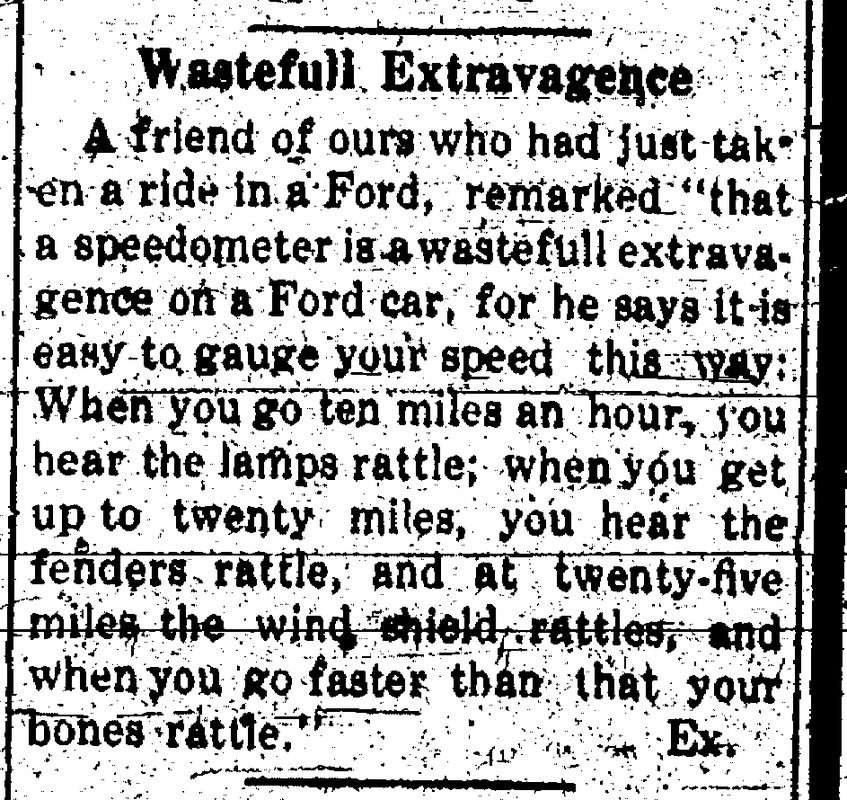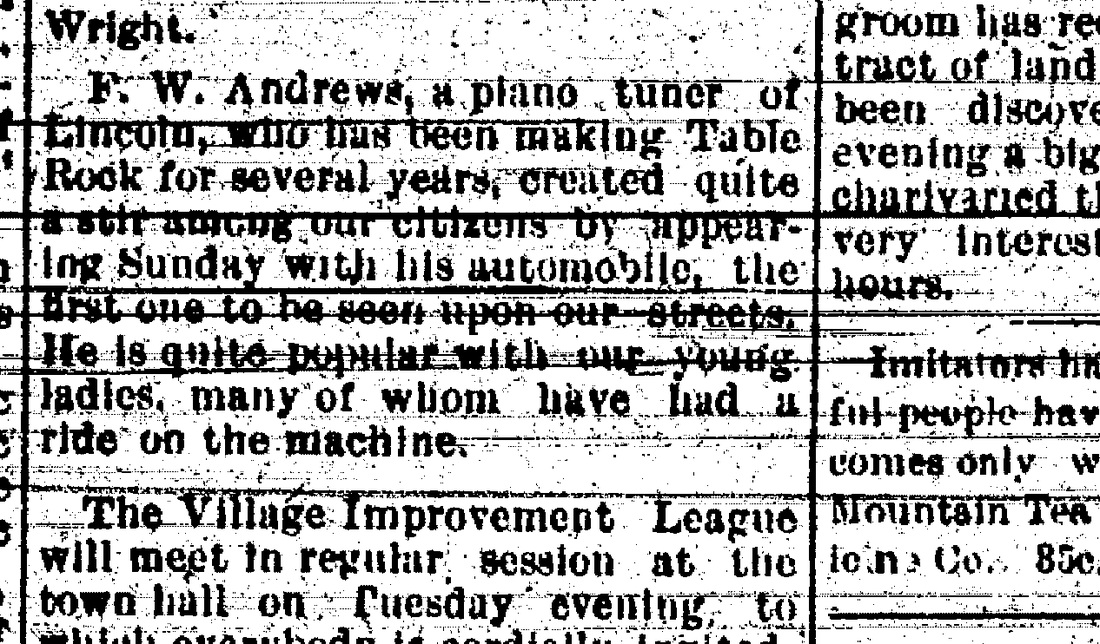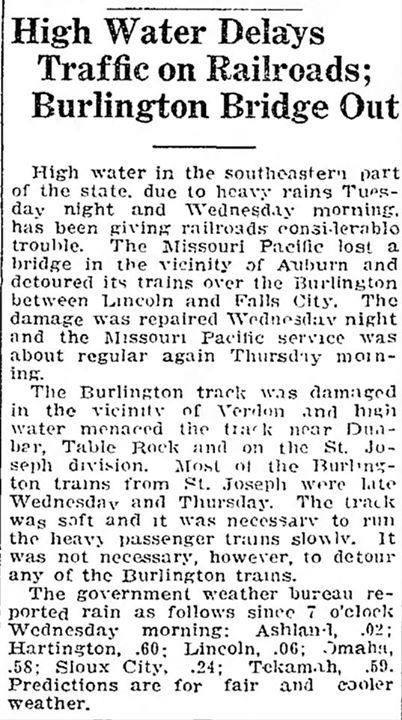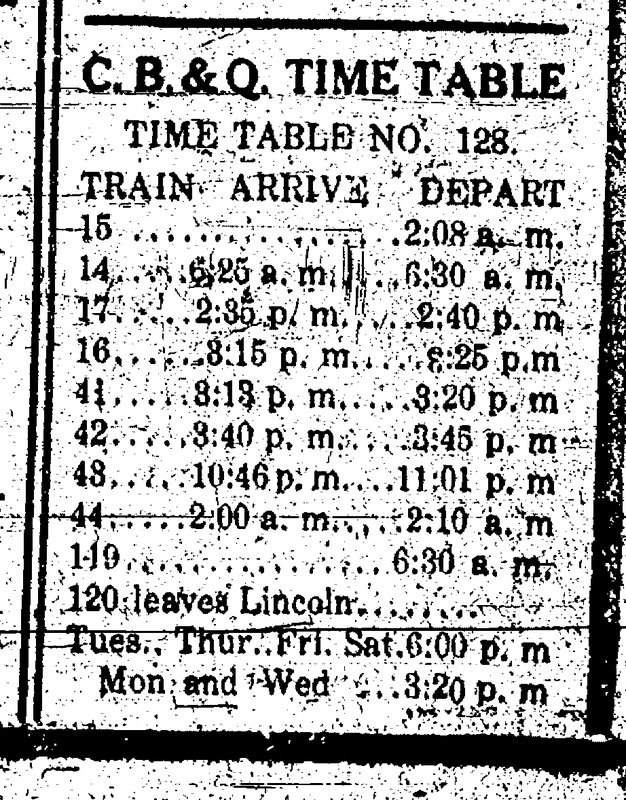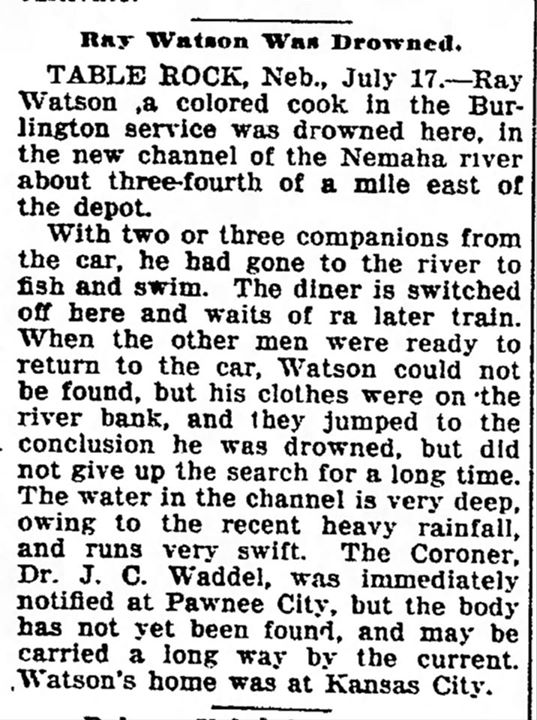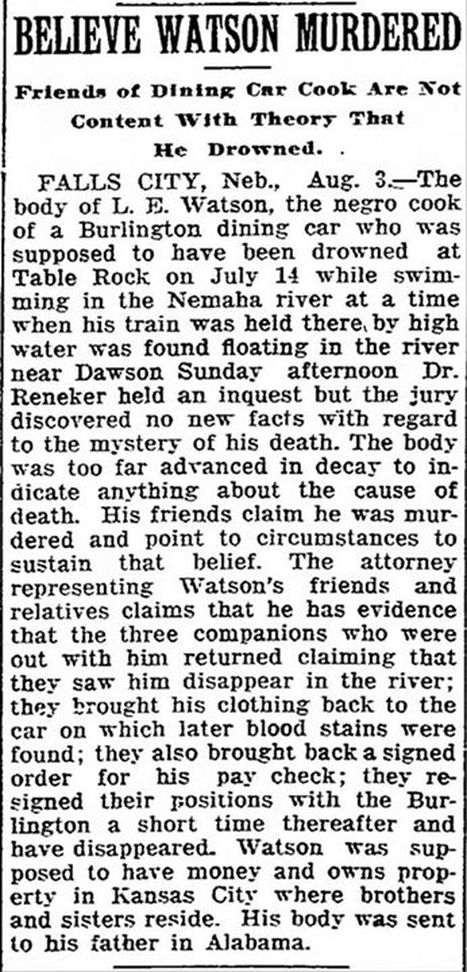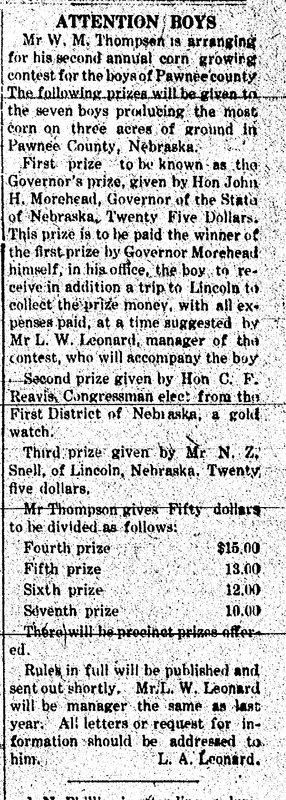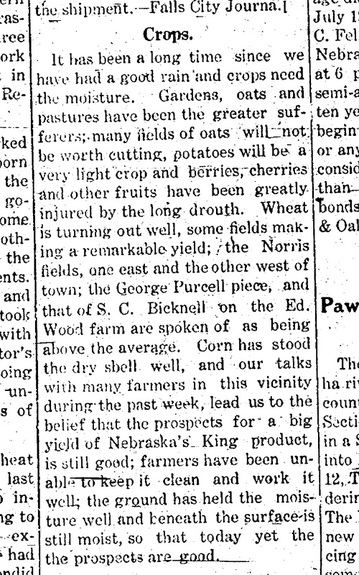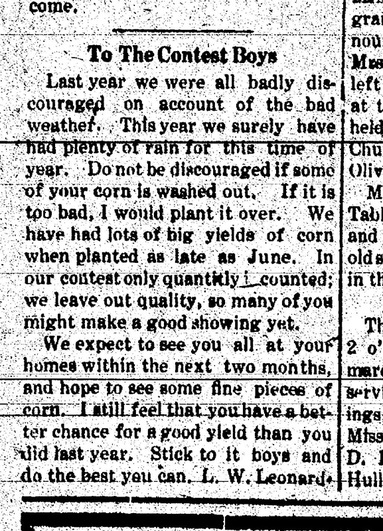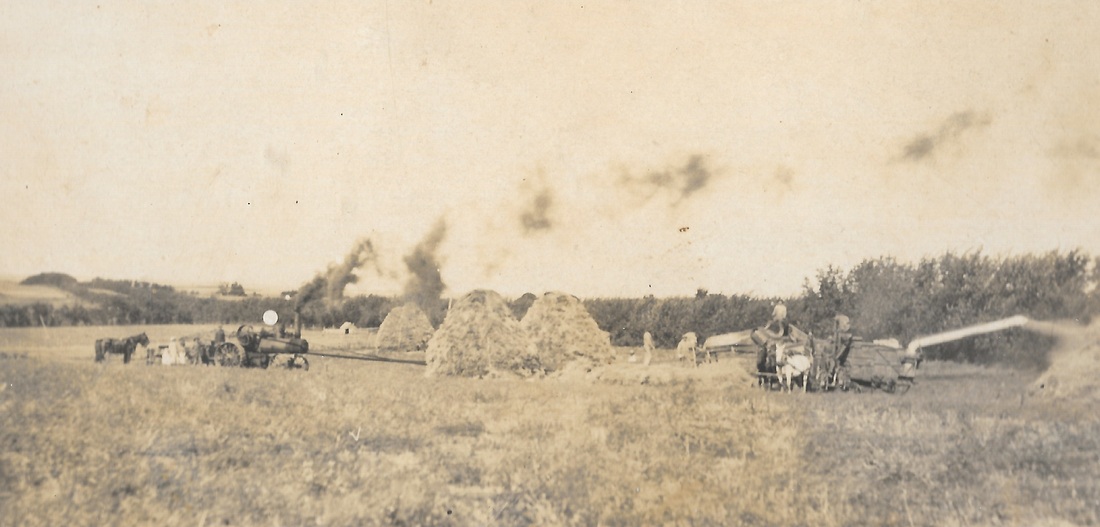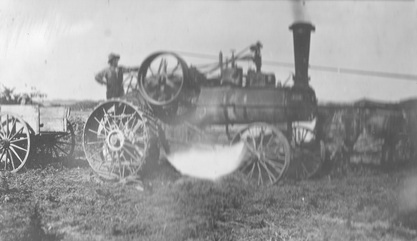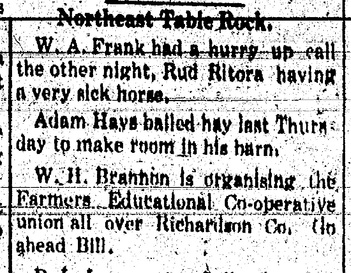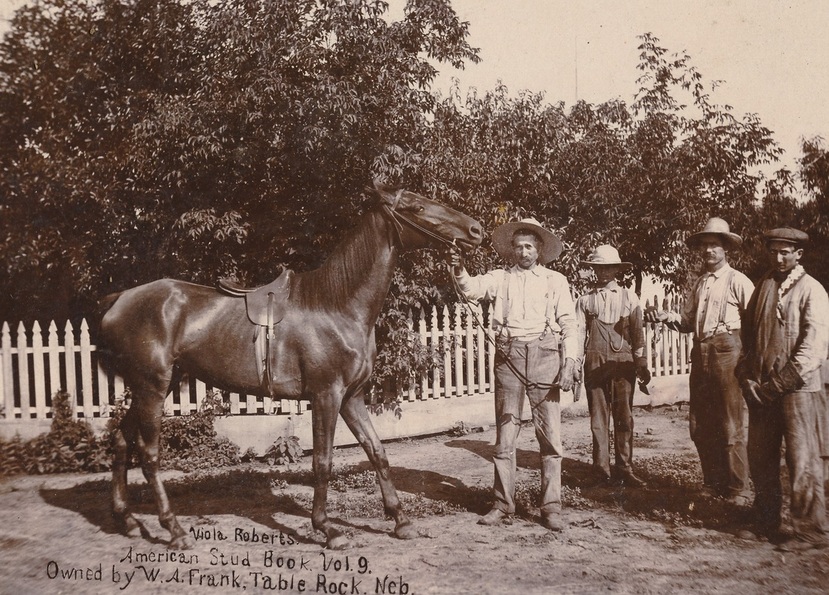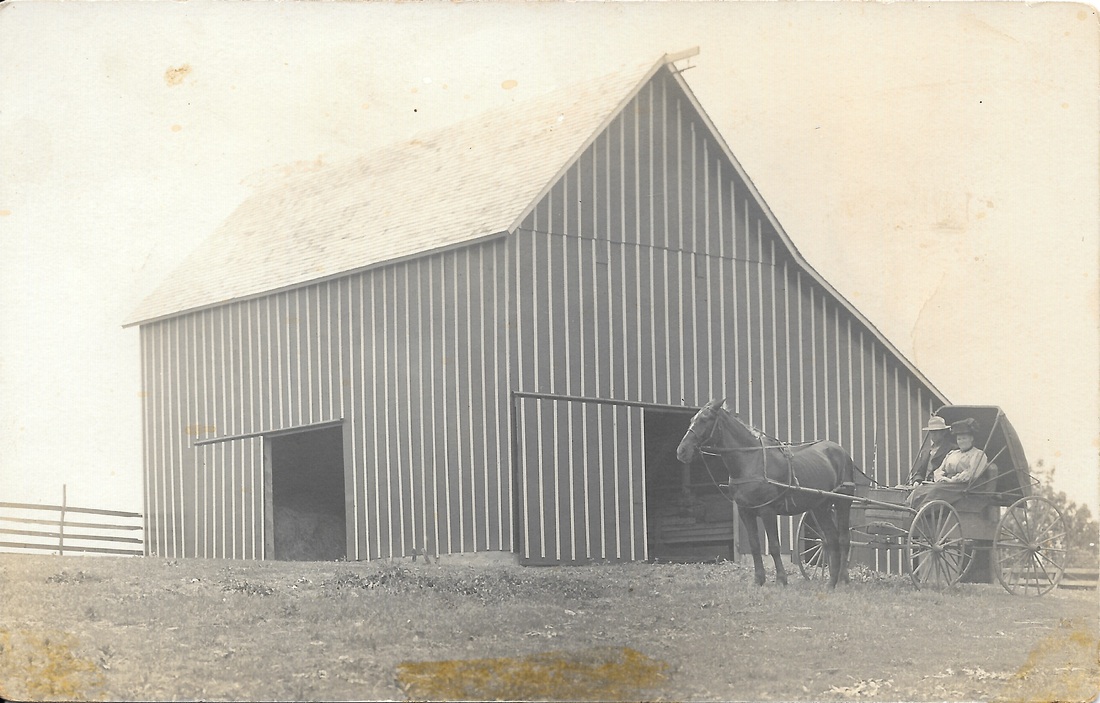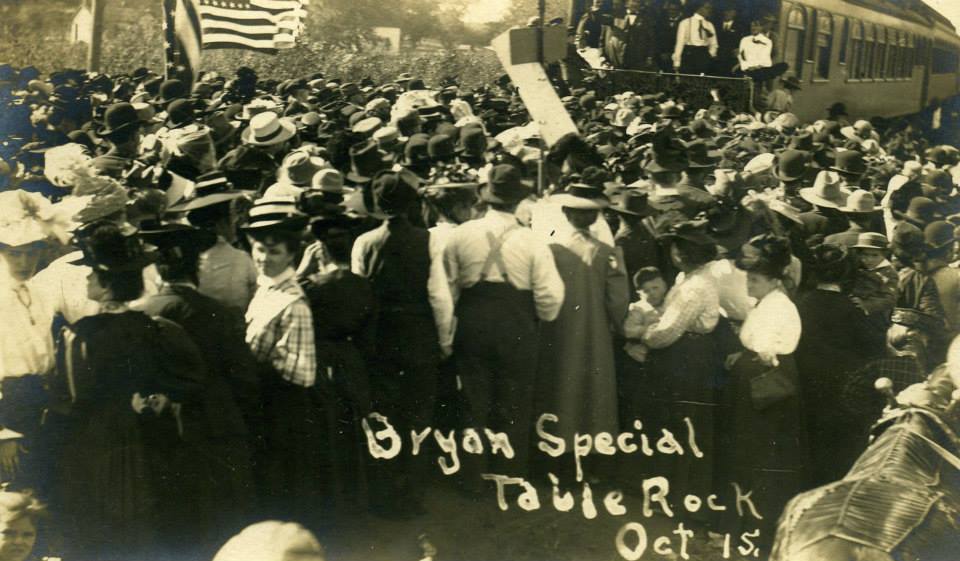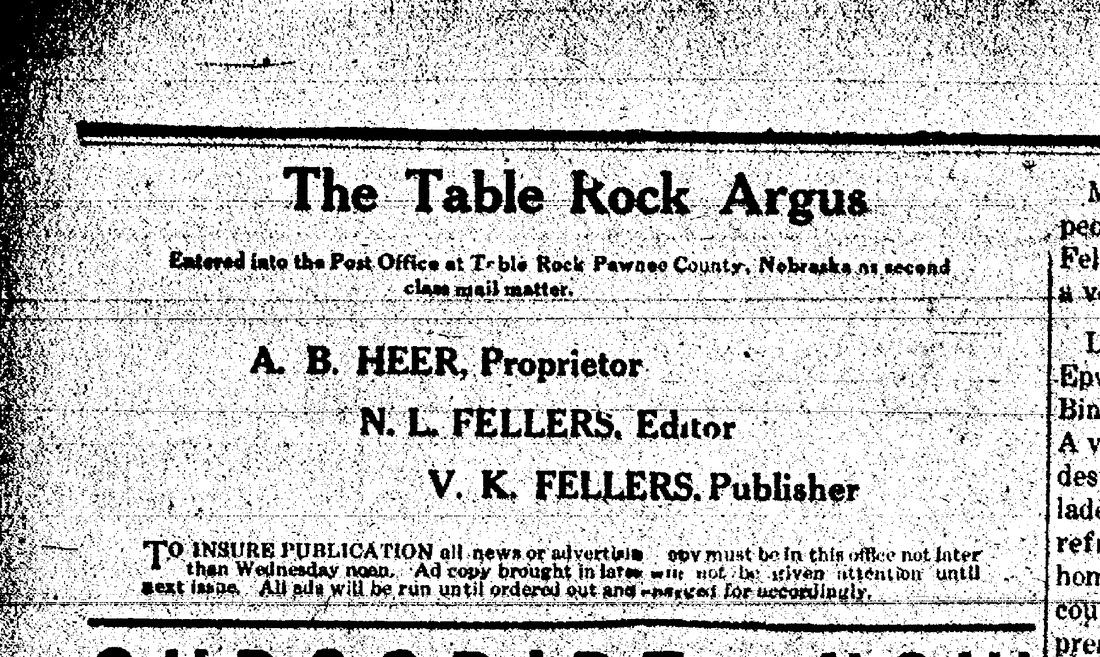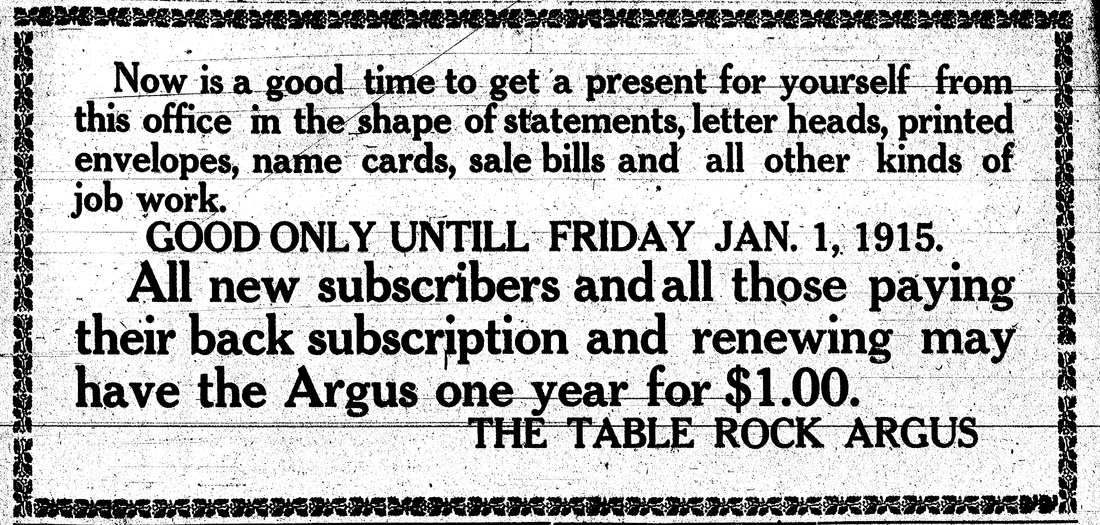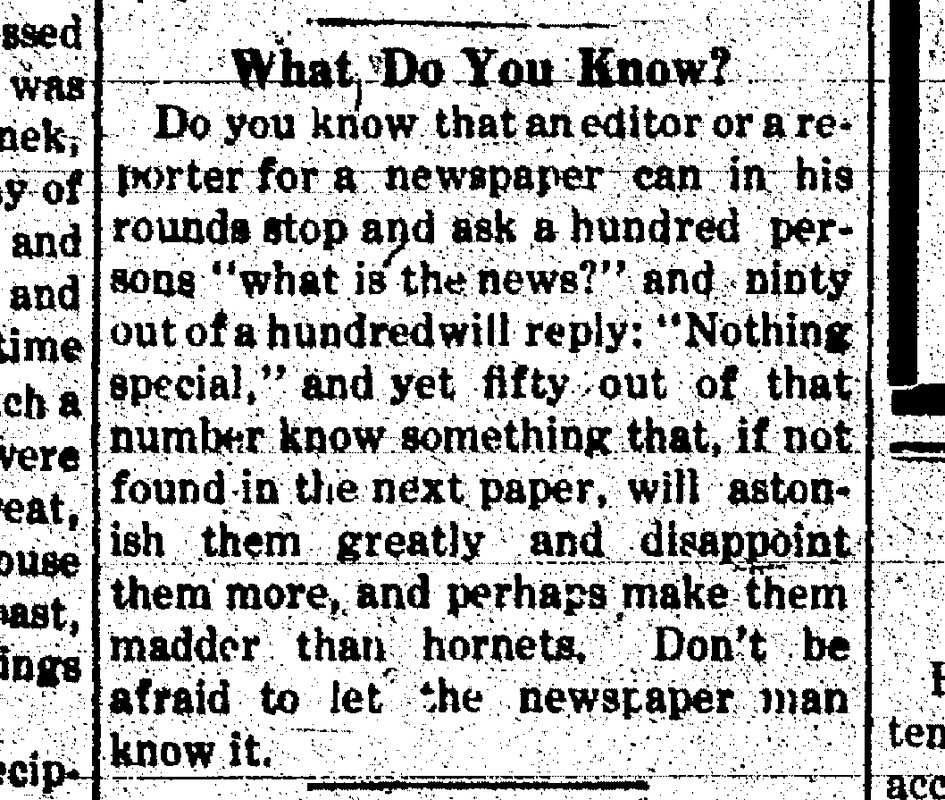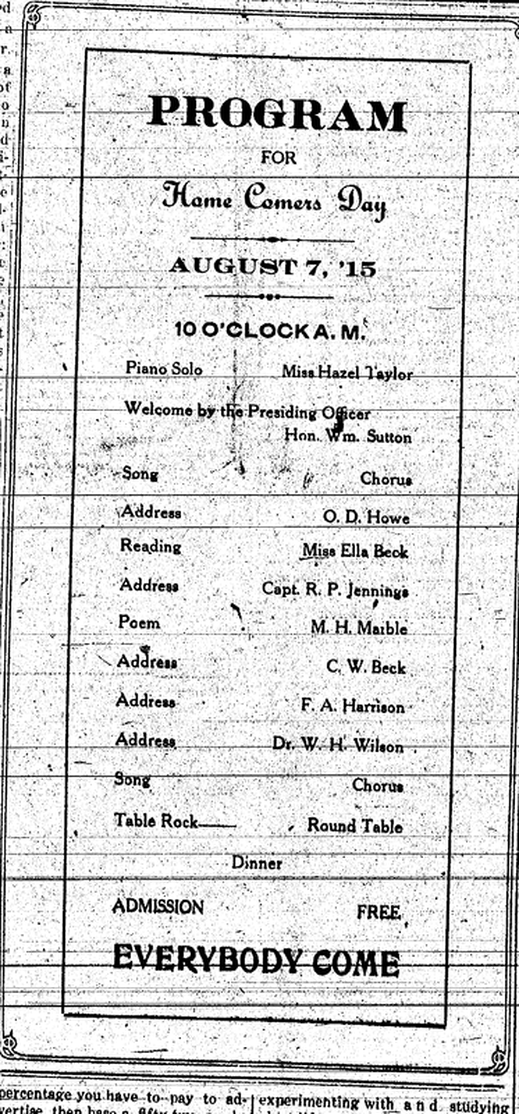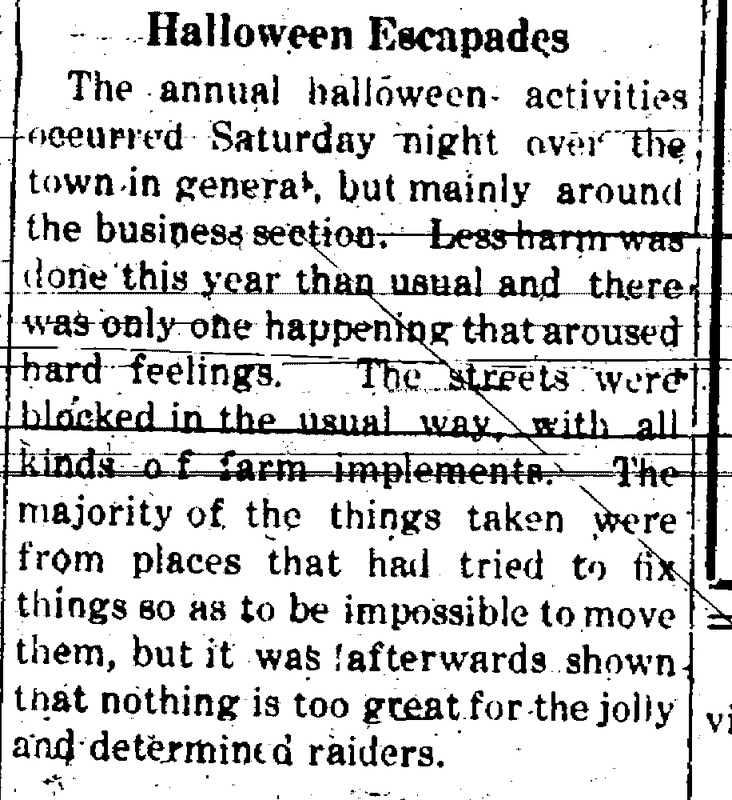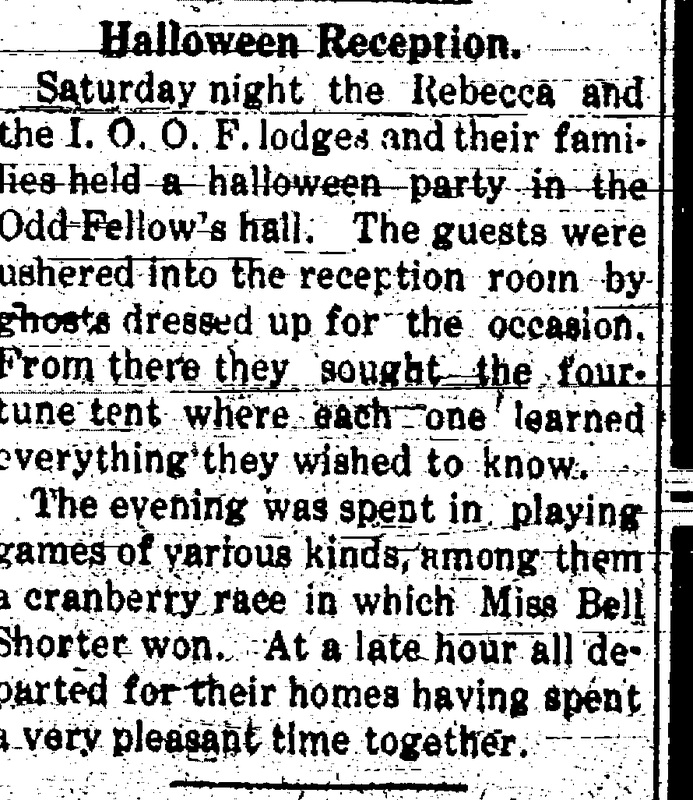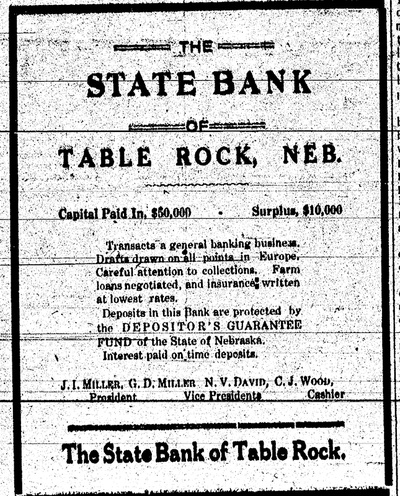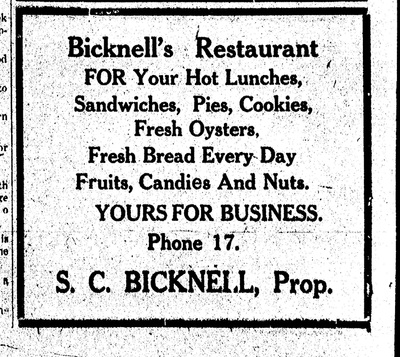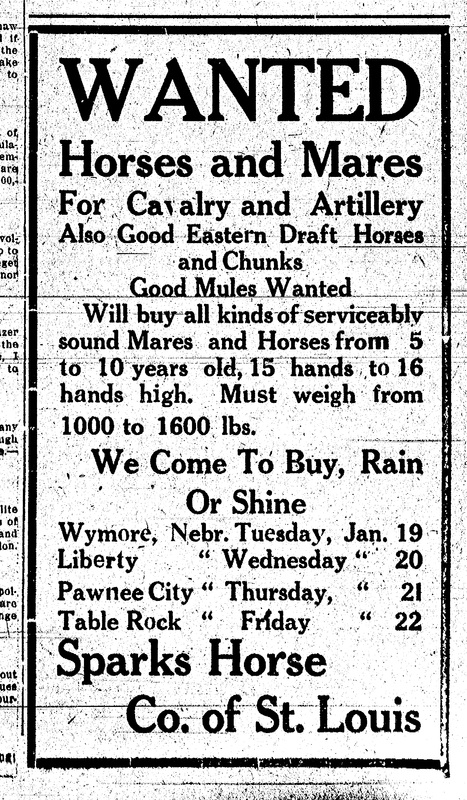the year 1915
a poem in the argus about looking homeward
The following poem was on the front page of a January 1915 edition. It addresses itself to small town people everywhere ("ye who bear our name in roaring cities or plant it on the prairies lone and wide"). It asks what dream is dearest when at "eventide" you think of home. The poet says that the very best memories see the town with "the benediction of the snow." He tells how "the home lights beam and beckon." It ends:
"Should I wander far o'er land and sea,
Those rays of love would guide my roving spirit,
And bring me home, dear little town, to thee."
"Should I wander far o'er land and sea,
Those rays of love would guide my roving spirit,
And bring me home, dear little town, to thee."
Trudy Fankhauser likes this poem a lot. She says:
It says what we, in the southeast corner of Nebraska, see and feel when we stare at the landscape God has given us. |
And he did it over 100 years ago!
folks who lived here in 1915
|
Read more about their families:
|
new year greetings
THE NEW YEAR
entertainment
|
There was some darn good entertainment. At the Opera House, you could buy tickets the Opera House Drugstore to see The Girl of Eagle Ranch, a fine "comedy drama."
To publicize it, "A Real Cowboy Band" made "their novel andpicturesquare parade at 4 p.m." It had opened on Broadway -- yes, in New York City -- in 1907 at Haverly's 14th Street Theater, according to ibdb.com. When it had opened in Boston in 1908, it had been described thusly: "The play is modern in every detail and is leased Upon conditions that will appeal strongly to the American heart. Although sensational in character, it is said that comedy has been so judiciously blended in it that it appeals to the lover of comedy as strongly as to those who prefer melodrama." Did the Table Rock audience agree? The result is lost to history. |
some more entertainment
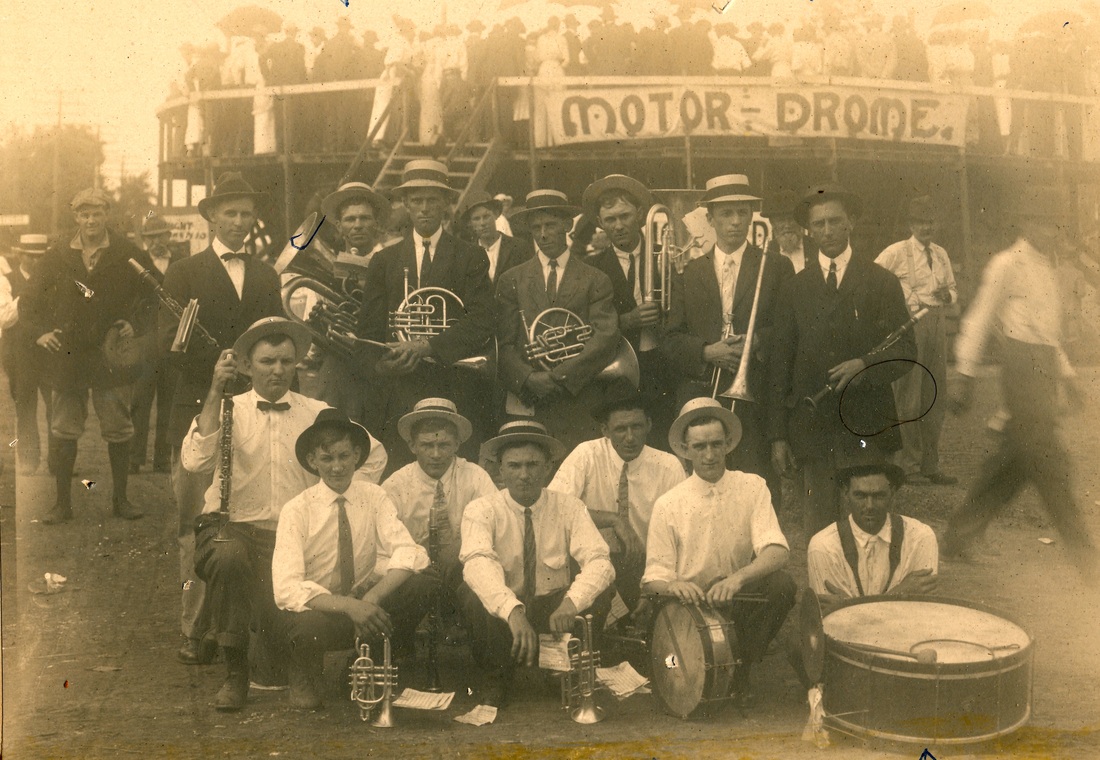
Photo 177. Another Bohemian band, about 1915. In front, in white shirts: Joe Tomek, Frank Tomek, Jess Vondrasek, Emil Rabstejnek, Arnold Petrasek, Earl Irwin, and, withy the drum, Chester Fisher. Back row: John or Fred Tomek, Tom Krofta, Art Krofta, Charles Rabstejnek, Ralph Cotton, Charles Klaine, Otto Vondrasek.
Notice the Motor-Dome sign behind the band? This was a spectacle: board track racing. A motorcycle (or even motorcycles) buzzed around on the walls inside of the structure. Some were permanent, but others like this traveled about like a carnival, being reassembled at each new site for a few days or a week or so. Here it was in Table Rock, courtesy of Kim Vrtiska, Photo 491:
|
According to Wikipedia, these motorcycling motor-dromes "were very dangerous and the danger was
aggravated by the riders' lack of proper safety equipment. Fans sat above
the top of the track, looking down at the racers. When a rider lost control, he
could slip up off the track and into the crowd. Many fatalities occurred, often
involving spectators"..."Board tracks proliferated in part because they were inexpensive to construct,
but they lacked durability and required a great deal of maintenance to remain
usable. Many of the tracks survived for as little as three years before being
abandoned."
|
a new city hall
Here is the City Hall that was being finished. It's 100 years old this year! These were taken in February 25 and retouched to sepia for fun.
city hall and m. h. marble
In this circa 1905 photo, you can see to the right of the M. H. Marble Building the empty lot where City Hall was later built in 1915. (Billy Bob Laun's Dental Office is now in the section on the right of the building here and the upper bar was in the part to the left. The dental office is under the three right windows, the bar under the two left, and the stairs under the other one.)
M. H. Marble, George miller, and speeding
And speaking of M. H. Marble, who was a Justice of the Peace, on June 18, George Miller had to go before him because of a speeding ticket....which was given to him a year after the fact! Miller said he wouldn't have minded it so much, but the event had been so long ago that he didn't get to have fun of remembering the "joy ride" for which he was given the tickete.
speeding and horses
What WAS the speed limit in 1915? 10 miles an hour according to the Ordinance 74, Section 86 (1911) that seems to have remained in effect. Read it for yourself, below, along with the rules about accommodating horses if you were on the road. The fine was $10 to $50, according to Ordinance 74, Section 87.
how do you know how fast you're going?
November 5, 1915: If you're driving a Ford, you don't need a speedometer. It's a wasteful extravagance. There are other ways to tell your speed, according to this article in the Argus.
dr. mccrea on fords
Again going off the topic of 1915, but following the connection by the article above, Dr. McCrea should be mentioned. He delivered over 300 babies here in his time so is worth remembering. In his autobiography, Dr. Ed McCrea, wrote that he was the first person in Table Rock to buy a "horseless buggy." He bought it in St.
Louis and had it shipped by express.
“When the boys had it to unload from the express cart, it was a
task. Everybody and dad was called to
lift the machine and get it on the platform.”
The next day they loaded it on a dray cart to take to Upper Town and
Table Rock turned out to see it. It had high wheels driven by chain, and a
six-horse marine engine with “one lung” (cylinder). He got a mechanic from
Humboldt to take the first drive. He was unhappy with it in the end. It ran on
dry ground but wouldn’t pull its own weight up a hill. He sent for another. He didn't mention the make of the car but it probably was not a Ford. Dr. McCrea said he hated Fords. “A man has H____ enough on earth without driving a Ford,” he wrote. He had bought a Ford, even though a mechanic told him not to, because it could not go anywhere when the mud was deep. The mechanic was right. Then a wheel came off when he was going 60 miles an hour, the wheel “jumping like a jack rabbit” as it hit bumps on its merry way. He got rid of that Ford and never bought another.
Dr. McCrea did not say WHEN he was writing about. The first horseless buggy was probably a number of years before 1915. Fords were produced in 1908, but he had other cars in between the first and the Ford.
By the way, while Dr. McCrea may have purchased the first car, the first car on the street was seen in 1901, as reported in the June 13, 1901 edition of the Argus:
Dr. McCrea did not say WHEN he was writing about. The first horseless buggy was probably a number of years before 1915. Fords were produced in 1908, but he had other cars in between the first and the Ford.
By the way, while Dr. McCrea may have purchased the first car, the first car on the street was seen in 1901, as reported in the June 13, 1901 edition of the Argus:
1915 - yet another flood in lower town
High water was not limited to Table Rock:
train stuff IN 1915
One item in the news was the death of a cook off a Burlington train. On a hot summer day he friends had taken advantage of a layover to take a swim in the Nemaha. When they got ready to return, he could not be found and was presumed drowned. The news later reported the finding of his body. Foul play was at first suspected, but (as reported in a third article that has been misplaced) the coroner eventually ruled the death as accidental.
farm news
Photo 850, harvest scene in 1915:
A steam threshing machine, 1915 ( below):
|
|
in the news - Veterinary Bill Frank and Farmer Adam Hayes
|
Bill Frank was in the news in this 1915 social clip, having had a "hurry up" call to take care of a very sick horse. Here he is with his stud horse Viola Roberts, Photo 201 below. (The other men are not identified.) The photo is undated. To estimate the photo's age, consider Bill Frank's age in the photo. He was born in 1860.
Adam Hayes was also in the news 100 years ago. He bailed hay to make room in his barn. Under te photo of Bill Frank is a photo of Mr. & Mrs. Adam Hayes in front of a fine barn, probably "the" barn. Photo 481 (undated) below the photo of Bill Frank. |
william jennings bryan makes a whistle stop in october 1915 |
THE ARGUS
|
June 1915: A. B. Heer, Proprietor; N. L. Fellers, Editor; V.K. (Vic) Fellers, Publisher. Frank Taylor was editor/publisher before and after.
|
June 1915: It was the same old story! The editor lamented that people don't give him news and yet if he werem
to publish a particular news item about them, it "will astonish them greatly and disappoint them more, and perhaps make them madder than hornets." |
looking homeward was a popular theme -- here is a program for a
"home comers day"
On the program: Hazel Taylor, William Sutton, O. D. Owe, Ella Beck, Captain R. P. Jennings, M.H Marble, C.W. Beck, F.A. Harrison, and Dr. W. H. Wilson.
more stuff
Halloween - only one happening aroused hard feelings. As was common in small Nebraska towns in those days, the streets were blocked with stuffs, here farm implements drug to town by "jolly and determined raiders."
The Odd Fellows and Rebekahs had a party -- ghosts ushered guests into the reception room and the guests could then visit a fortune teller.
The Odd Fellows and Rebekahs had a party -- ghosts ushered guests into the reception room and the guests could then visit a fortune teller.
This one is interesting because the big fire that wiped out much of the business district on the south side of the Square started in the basement of the Belshaw Pharmacy. The news articles about the 1920 fire say only that -- it started in the basement of the Belshaw Pharmacy. They don't say what was the CAUSE of the fire.... Just saying....
